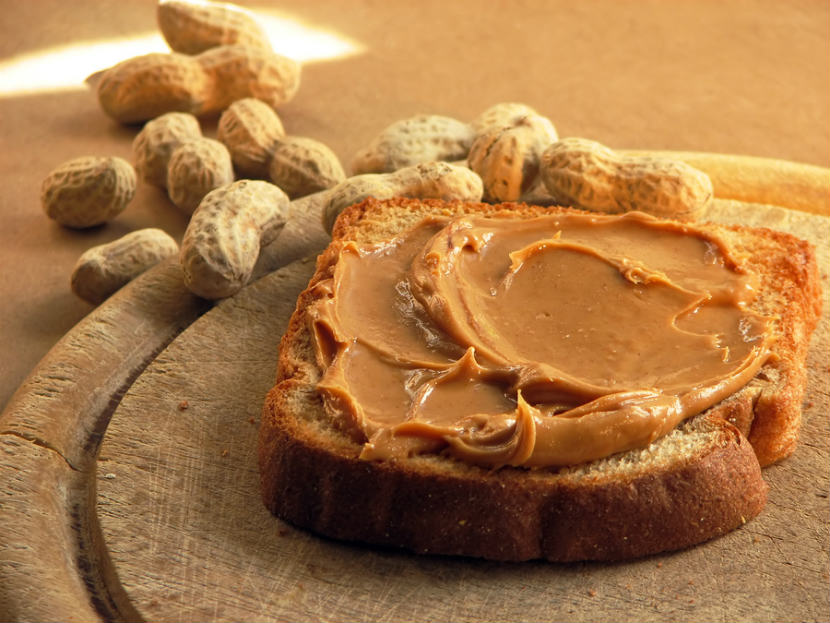
Crunchy or smooth, peanut butter tastes great and is good for you. It can be used in many ways. Read on for some helpful information on choosing peanut butter and new peanut butter ideas to try.
Peanut butter is nutritious
-
Peanut butter is made from ground peanuts that have been roasted. Sugar, salt (sodium), oils (fat) and additives that prevent separation may also be added.
-
It is considered a protein food according to Canada’s Food Guide.
-
Peanut butter also provides you with fibre, healthy fats, vitamin E and folate.
What to look for when buying peanut butter
-
Peanut butter comes in smooth and crunchy. Crunchy peanut butter has small pieces of crushed nuts.
-
The best choice is a peanut butter with one ingredient listed: peanuts. If the peanut butter is made only with nuts, the oil will rise to the top of the jar. Stir the oil back in again each time you use it. Storing the jar upside down can help keep it mixed.
-
“Natural” peanut butter usually means the peanut butter is made with nuts only. It is best to check the ingredient list to make sure only peanuts are listed.
-
Larger containers are often a better buy. Check the unit pricing to be sure.
-
Buy extra on sale. Keep some on hand if you find it hard to go grocery shopping.
Safety tips for peanut butter
-
To reduce the risk of choking in young children, only serve peanut butter spread thinly on crackers or dry toast. Never serve it on bread or from a spoon.
-
Peanut allergies are a concern for many people. Public places attended by children (schools, summer day-camps) are usually nut-free. Find out more by reading our article on peanut allergies.
-
If you are concerned about introducing peanut butter and peanut-containing foods to your baby, read this article on Food Allergies and Babies and speak to your dietitian or health care provider.
How to store peanut butter
-
Any peanut butter made with nuts only should be stored in an airtight container. It can be left in the cupboard or fridge. Use within 6 months.
-
All other types (with added oils) can be stored unopened in a cool, dry place like a cupboard. For the best quality, use by the, “Best Before” date listed on the container or within 2 years. Once opened, it can keep in the cupboard or fridge. Use within 3 months.
-
For the best quality, use older jars of peanut butter first.
5 things to do with peanut butter
Make a smoothie
-
Smoothies often have basic ingredients like milk, yogurt, fruit. The ingredients are mixed with an electric blender until smooth. Try peanut butter-raspberry or banana combinations. Use about one tablespoon (15 mL) of peanut butter or a little more to suit your tastes.
Use it as a dip or spread
Pack peanut butter for a portable snack
Make a simple peanut sauce
Four new sandwich ideas
-
Spread it on a whole-grain tortilla. Add a banana. Roll it and eat!
-
On half a whole-grain toasted bagel, add peanut butter and strawberry slices.
-
Spread it on half a whole-grain pita. Stuff with grated carrot and apple.
-
Spread over leftover pancakes. Fold and eat.
Mix it up! Experiment with other nut and seed butters like almond, sunflower and soy. These are all nutritious options to incorporate into meals and snacks.
Recipes where you can use nut butters:
Moose Cakes
Soy Butter and Banana Roll
How can a dietitian help?
A dietitian can help you choose nutritious packaged foods, like peanut butter. They will work with you to compare different food labels and show you what to look for. A dietitian can help you plan a balanced diet that includes heart healthy foods and considers your lifestyle, culture and medical history. Connect with a dietitian today!
Bottom line
Peanut butter is a nutritious food that contains protein, fibre, healthy fats, and vitamins and minerals. Compare the list of ingredients of various brands to pick one that is nutritious, preferably with only peanuts listed.
You may also be interested in:
Peanut Allergies FAQs
More on peanut allergies: A list of foods that may contain peanuts
Peanut-free Lunches and Snacks
This article was written and reviewed by dietitians from Dietitians of Canada. The advice in this article is intended as general information and should not replace advice given by your dietitian or healthcare provider.
Last Update – February 27, 2023